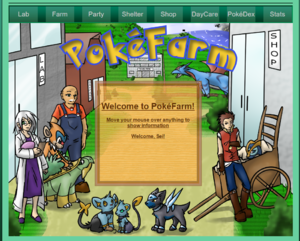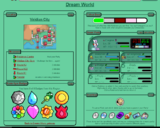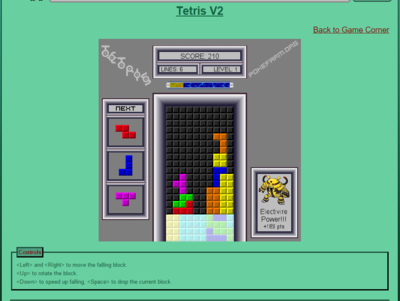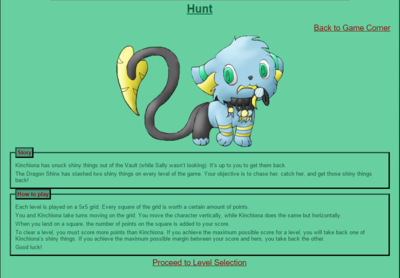Old PokéFarm

Often referred to as PF1 or Old Pokéfarm, this was the original version of the game found on the website pokefarm.org (the website is no longer hosted by Pokéfarm). It entered development on the 9th of October 2009 until the 1st of January 2010 when the site's servers were opened to the public. PF1's code was a project started by Niet, whose screenname at the time was Kolink. Pokefarm.org was up and running for just over 5 and a half years (in comparison to PFQ, whose servers opened on the 1st of January 2013), until its eventual shutdown on the 27th of October 2015[1].
Black Market
The Black Market was a shop on PF1 that required Savage Crystals to purchase from it. This shop contained many unique items that could not be purchased or obtained through any other method.
Scratch Cards were rewarded for completing orders in the Black Market. There were different types of Scratch cards depending on the amount of Savage Crystals that were spent on the order.
The items that were available included: Green, Red, Blue, Yellow, and Black Gigaremos, Mini-Radars and the various types of battery packs for it, Ultimate Vouchers and Gold Poke Vouchers, Meta-Xs, Glitch Fixers, Yellow Flutes, Relics, Shelter Warmer, Extra Trade Slot, Extra Supplier Slot, and a Spinda Box.
Bonus Days
Bonus days were special days on PF1 that were usually triggered by a counter. When a counter is filled, a bonus day begins after the next reset (similar to PFQ's Bonus Counter). For the entire 24 hours, something special happened. There were six different counters, each with a different bonus effect. Those counters were:
- Shinx Counter: A representation of Kolink and was used to indicate EHP/LUP multiplier days. It was a countdown from 10 million interactions. The default bonus was a 2x multiplier. Any multiplier that was not 2x was due to an admin's decision and was not dependent on the countdown. The highest recorded multiplier was 5x. There were separate sets of Berries for a normal day, 2x, 3x, and 4x or higher.
- Ice Houndour Counter: A representation of Wolfin and was used to indicate Interaction Point plus days. It counted up from zero and tracked the number of Interaction Points earned throughout the site. This counter's bonus granted a certain amount of extra Interaction Points for each click. This would be anywhere from +1 to +8, with varying chances of getting each one.
| Bonus | % Chance | Interaction Points Needed |
|---|---|---|
| +1 | 30% | 20,000,000 |
| +2 | 22% | 40,000,000 |
| +3 | 16% | 60,000,000 |
| +4 | 12% | 80,000,000 |
| +5 | 8% | 100,000,000 |
| +6 | 6% | 120,000,000 |
| +7 | 4% | 140,000,000 |
| +8 | 2% | 160,000,000 |
- Floatzel Counter: Counted Scour EXP gained and all EXP earned from Scouring was multiplied. When it reached its maximum at 50,000,000 Scour EXP gained. The next day was a x2 multiplier; the second day, x1.75; the third day, x1.5; the final day, x1.25. On the fifth day, the counter reset its count. This made the Floatzel counter the only counter that automatically had a multiplier bonus that extended over more than one day. The counter Pokémon was originally a placeholder: shiny Celebi.
- Articuno Counter: Counted Credits spent in the Shops and other places around the site. Trades between users were not counted. When the counter reached its max at 1,000,000,000 Credits spent, the discounts varied between 1% and 30%. It was unknown how the discount percentage was determined. The counter Pokémon was originally a placeholder: Manaphy.
- Latios Counter: Counted Eggs hatched and would multiply the Gems found while hatching an Egg. When it reached its maximum at 75,000 Eggs hatched. The multiplier bonuses could be x2, x3, and x4. It was unknown how the multiplier bonus was determined. Latios was acting as a placeholder for another, unknown Pokémon.
- Shaymin Counter: Counted Shelter adoptions and would multiply the user's Shelter Pass, allowing more adoptions. There was an adoption cap of 255 even with an active multiplier. When it reached its maximum at 100,000 adoptions, the multiplier bonuses could be x1.5, x2.5, and x3. It was unknown how the multiplier bonus was determined. Shaymin was acting as a placeholder for another, unknown Pokémon.
Confusion
Confusion was a status that could affect a Pokémon. This was achieved by using the Super view mode of the Party page or a Spinda Box. Confusing only affected Scouring. If a Confused Pokémon was sent on a long mission and it became lost it would take longer for it to return.
The Pokémon had to be in the user's Party. Then, the user would either click the arrow images or use the central scroll button of their mouse to spin the party disc. If done correctly, Pokémon in the Party would be surrounded by yellow sparkles when the disc stopped completely. Any Pokémon that sparkled had a random chance of becoming Confused.
If the Pokémon was Confused, the name would be coloured yellow instead of white. Users could use a Pokémon Tracker to see if a Pokémon in their Fields were Confused. A yellow duck image would be located under the name of the Confused Pokémon. A user could also go to its private Summary and find text under the image stating.
"Loam is staggering around in a Confused manner...
A Yellow Flute is needed to snap him out of it."
If the Pokémon was on a Scour it would have a question mark bubble over its head.
Confusion could be cured by using one of four methods. Those methods were using a Yellow Flute, using a Lum or Persim Berry, trading the Pokémon, or sending it on a Scour mission until it becomes lost.
Custom Sprite Pokémon
Custom Sprite Pokémon were either released through an event, as a Holiday Special, or through other means. Some Custom Sprite Pokémon were sold in the P3 Laboratory for Savage Crystals. Users on PF1 could submit Custom Sprite Pokémon that they made to the site, although, not all submissions were accepted and used.
Custom Sprite Pokémon that were obtained from an event or giveaway were distributed as an Egg that looked the same as a normal egg.
An Egg containing a Custom Sprite Pokémon would break a Shiny Chain unless it was designated "obtained under unknown circumstances" or "obtained through a Special Event". Similarly, it would not break a chain if the Egg was of the same species as the user's current chain.
A Legendary Custom Sprite Pokémon would affect and be affected by a Legend Token's limit. If a Legendary Custom Sprite Egg hatched and surpassed the limit, the Legendary Custom Sprite Pokémon would run to the Shelter.
The Custom Sprites that were obtained from the P3 Lab were applied by being the correct species, evolution, and gender to a Pokémon that a user-owned. They could not be Shiny. This made them similar to PFQ's costumes except they were permanent. There were three exceptions to these rules which were the Defective Missingno., the Power Suit Rhyperior, and the creator of a user-submitted Custom Sprite. The Defective Missingno. did not need to be owned, instead, it had created a new one during purchase. The Power Suit Rhyperior did not cost any Crystals; although, the user did have to have a female Rhyperior and a Power Suit Forme-change Item. Finally, the creator of user-submitted Custom Sprite Events was allowed one free sprite of their submission without providing a base Pokémon.
Holiday Special Custom Sprites were released directly to the P3 Lab in honour of a specific holiday. They were available year-round, however, they were cheaper during their specified holiday while the prices were increased during the other months. As an example, Amorvoir was released in honour of Valentine's Day and cost 5 Savage Crystals from the 13th to the 15th of February. During the other times of the year, it would cost 40 Savage Crystals.
The Custom Sprite Pokémon could not be dressed up, evolved, or forme changed. Their regular sprites would be shown in the Dream World, PokéWalker, Super View of a Party Page, and in the Trade Centre. They did not count as a separate species, instead, they would register as their regular species in the PokéDex. They could also be used as a breeding pair but would not produce Custom Sprite Eggs.
Dream World


The Dream World was a realm where Pokémon could explore different regions and battle while they were asleep. Dream World Pokémon could be caught/transferred into a user's party/fields and would be registered in the DreamDex.
The Gateway was the welcome screen where a Pokémon could be put to sleep to enter or woken up to exit the Dream World. A Pokémon from the outside world would start at level 5 during its first venture and would not count towards the DreamDex. Pokémon that was woken up and was from the Dream World would have its level rise to meet the Dream World's level. Dream World Pokémon could only be evolved in the Dream World.
Game Corner
Heritage
The Heritage page was where the lineage of a Pokémon or Egg was shown. A user could go to this page and view the Pokémon/Egg's children, siblings, parents, grandparents, and great-grandparents if the Pokémon/Egg had any. It also allowed users to view who currently owned the Pokémon and what its nickname was. If a Pokémon or egg was semi-transparent, then it was being prepared to enter the Shelter from the DayCare. Whereas, if it was removed from the Heritage page then it indicated that it was released from the Shelter into the Wild.
This page was featured on PFQ originally too, but was removed some time after 2015 due to the pages crashing from the number of Pokemon.
Merchant
The Merchant was where users could trade items/berries for other items and it housed the Spin the Wheel game. The Merchant had also been run by Doug. Relics could be obtained there in exchange for Steel Bars which could be obtained in exchange for 5 Metal Coats. The way this worked was a user had 5 Metal Coats and exchanged them for 1 Steel Bar then, in turn, exchanged that Steel Bar for a Relic Copper. Users could also exchange for the higher Relics as well.
Spin the Wheel
Spin the Wheel was a game that enabled users to trade Pokémon for Amulet Coins, or AC for short. The AC could then be used for betting on the Spin the Wheel game and to win prizes.
Each Pokémon species had a fixed value of Amulet Coins which reflected their rarity. A shiny Pokémon was worth 100 times the value of a normal Pokémon. There was also a cap of 25 Pokémon that could be traded each day if the user was not the Original Trainer due to a sudden surge of people adopting Pokémon from the Shelter solely to trade them in for AC.
While betting, the user would decide the amount of AC they would use and this amount would influence the prizes and their probability. There were a minimum and maximum betting amount for each field. If a user bets an AC amount between the min. and max. amounts of a field they would get the chance to win that prize.
P3 Laboratory
The P3 Laboratory was a shop that sold Custom Sprites for Savage Crystals and applied it to a Pokémon that was already in a user's possession. Users had to have 250 EggDex entries to unlock the P3 Lab. Users had to meet certain requirements such as having the correct amount of Savage Crystals and the correct Pokémon. The shop would only take the Savage Crystals from the user's account after the Custom Sprite had been applied.
Quest Reward Vouchers
The Quest Reward Vouchers could be redeemed for any Quest Reward that a user had already finished. ???
Shiny Quest Reward Vouchers guaranteed the user a shiny version of a Quest reward Pokémon.
Savage Crystals
Savage Crystals were a form of currency used in the Accessory Shop EX, Black Market, and the P3 Laboratory.
One Savage Crystal equalled 1 British Pound (£ or GBP). They were bought through a website called MyK2. A user would create a free account and link their MyK2 account to their PF1 account to transfer the Savage Crystals that the user bought. If an item cost £1.65 it would be equal to 1 Savage Crystal and 65 Crystal Shards.
They were also a possible prize from Scratch Cards and Crystals that had been given away during special occasions. Savage Crystals could not be gifted or traded once it was on the PF1 account; however, they could be transferred back to the user's MyK2 account.
Scavenger Hunt
Scavenger Hunt was a special event that distributed special prizes to users who completed the hunt. The hunt lasted until the last prize was claimed. The rules were:
- Users had to match the Pokémon that was shown on day one, as closely as possible: the order in the Party, species, gender, name, level, held item, and so on.
- All Pokémon had to have an "obtained" date no earlier than the Hunt's first day. Any Pokémon obtained before the Hunt would not qualify to fill the requirements.
- Prizes were given out on a "first come, first serve" basis. Users had to click the link to claim their prize on the Hunt page. The faster they finished, the more likely it was that there was a prize left to claim. If the prize was an Unova Pokémon, the Unova Pass was not required to claim it.
Users could observe how close they were to meeting the requirements on the Hunt page. Requirements that had been met appeared in the colour of the site skin that the user was using.
| Date | Difficulty | Requirements | Prizes |
|---|---|---|---|
| April 12th - May 14th, 2011 | Average |
|
Original Emolga
|
Summon Tablets
Summon Tablets were a type of Treasure with 15 different types of tablets. Their appearance and sale value were identical; nevertheless, their name varied depending on what they were connected with. For example, "Summon Tablet (Haures)".
Users could recharge Summon Tablets which were Quest-related items at the Merchant. A user would pay Doug ![]() 100 and he would take the Summon Tablet and make the user hold a Summon Item while it was being recharged. Once recharging was completed, the user would then trade back the Summon Item for their Summon Tablet. If the same Summon Item was not returned then Doug would not return the Summon Tablet. If a Summon Tablet was lost during the Quest then the user would lose any progress related to that Tablet. Sometimes a Tablet would be broken in the recharging process. If it was then Doug would give the user the pieces, no progress for the Quest would be lost, and the user would be allowed to keep the Summon Item. There was a way to fix the broken Tablets; regrettably, the method to do this was kept a secret.
100 and he would take the Summon Tablet and make the user hold a Summon Item while it was being recharged. Once recharging was completed, the user would then trade back the Summon Item for their Summon Tablet. If the same Summon Item was not returned then Doug would not return the Summon Tablet. If a Summon Tablet was lost during the Quest then the user would lose any progress related to that Tablet. Sometimes a Tablet would be broken in the recharging process. If it was then Doug would give the user the pieces, no progress for the Quest would be lost, and the user would be allowed to keep the Summon Item. There was a way to fix the broken Tablets; regrettably, the method to do this was kept a secret.
Super-Lite
Super-Lite PokéFarm, often referred to as SLPF or Super-Lite, was a version of PokéFarm that could be used only for making interactions. It had almost none of the features of the main site but did have a few features designed to make interacting easier. One benefit of Super-Lite PokéFarm was that the page displayed the status of a Pokémon/Egg. Users could not click on a Pokémon/Egg that they had already given an interaction, that was currently locked, or that (for Eggs) was ready to hatch.
Transfer
For more detailed information, please visit PF1 Transfer. The PF1 Transfer was a feature that allows users who had a PokéFarm 1 (PF1) account to transfer certain Pokémon from their PF1 account to their PFQ account. This feature was available to all users but was only usable by those with a PF1 account.
Ultimate/Paid Accounts
Ultimate accounts, also known as paid accounts, offered players a way to access several perks and features which were otherwise unobtainable for a certain amount of real money (similar to PFQ's Hypermode). Paid accounts were obtainable only on Black Market or through trading for a voucher with other players. Ultimate accounts came in the form of a 1-month voucher for 8 Savage Crystals or a 1-year voucher for 80 Savage Crystals. All vouchers a user had purchased but not redeemed could be seen on the Black Market page.
Ultimate accounts would gain access to:
- Free Summon Item: The first activation of a paid account provided the player with a Summon Item of their choice. The second Summon Item was available upon activating a 1-year paid account. If the first account activated was a 1-year account, the user would be granted 2 summon items. After being granted a summon item, users had to wait at least a year before they were granted another summon.
- Special Forum: A special forum was visible only to Ultimate users. It served as a place for any discussion, with no strict theme. Paid account users were also awarded a special userbar by their username, aside from the regular Rank badge.
- Additional Lab Slots: Two additional egg slots were added to the basic four slots. The chances of finding rare eggs were higher.
- Click/DayCare Multipliers: Users gained a 1.4x multiplier per click and a 1.5x rate of growth in the DayCare.
- Increased Pokéwalker Gift Limit: Raised the limit on how many items a user can obtain per day to 25 instead of 10.
- Decreased Release Delay: Users could release their Pokémon in 2 hours instead of 12 hours.
- Increased Daycare Eggs: Users could take two eggs from DayCare instead of only one.
- PokéRadar: Users could obtain and use the PokéRadar instead of relying on the Black Market's Mini-Radar.
- Gold Poké: Each month users would receive 150 Gold Poké and get a 10% lower price on items in the Gold Shop.
- Other: Users were able to remove all advertisements from their view including advertisements in Super-Lite as well. Users could also use a much smaller version of the PokéFarm banner that appeared on the top of every page.



